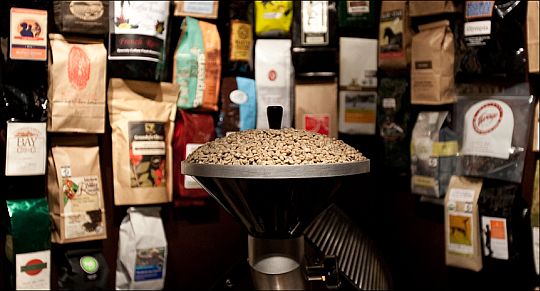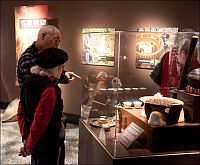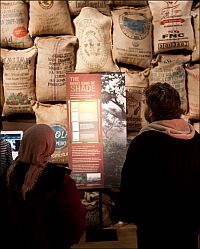
Coffee culture is king in Seattle. Whether it’s because of the eternally gray weather, the cool, rainy climate, or our inability to socialize outside a dimly lit café, there’s no denying the importance of the caffeine bean in a Seattleite’s daily life.
And certainly we’ve earned our rep as a highly caffeinated metropolis, with more coffee shops per capita than anywhere else in the country — many of them artisanal roasters selling specialty coffees. But the story of your steamy mug of joe doesn’t begin and end with a moody barista.
 In fact, it probably started in the hands of someone like Edwin Martinez, a third generation coffee grower who has been picking coffee beans in Guatemala with his family since he was a young boy. From there, they may have passed through a co-op set up to help small farmers process and market their beans. Then they’ll move on to someone like David Griswold, the founder of Sustainable Harvest, a specialty coffee importer who bridges connections between the farmers in tropical coffee-growing nations and the roasters in, say, Seattle.
In fact, it probably started in the hands of someone like Edwin Martinez, a third generation coffee grower who has been picking coffee beans in Guatemala with his family since he was a young boy. From there, they may have passed through a co-op set up to help small farmers process and market their beans. Then they’ll move on to someone like David Griswold, the founder of Sustainable Harvest, a specialty coffee importer who bridges connections between the farmers in tropical coffee-growing nations and the roasters in, say, Seattle.
The roasting process will awaken the coffee beans’ complex aromas and flavors — and they’ll soon be passed from barista to half-awake patron. And though you might be sipping on a half-caf soy latte with sugar-free vanilla syrup, you’ve really got the whole world in your cup.
It’s this story that a new exhibit at Seattle’s Burke Museum aims to tell. Opening weekend of Coffee: The World in Your Cup featured exhibit tours, coffee tastings, and informative talks by Martinez, Griswold, and University of Washington professor Max Savishinsky. "We’re really putting a huge topic in a small space," said Education Director Diane Quinn.
The idea for the exhibit originated here at the Burke Museum, but involved collaborations with roasters and growers and other coffee folk from around the world. By touching on everything from coffee’s history and health benefits to cultivation and "cupping" techniques, the exhibit really addresses what Martinez called the "disconnect of information" from grower to sipper.
 And part of that disconnect is certainly tied to the environmental and social implications of each cup. "It’s important for consumers to be aware of the complexities and to know they can make good choices," said UW-Tacoma junior and Starbucks barista Hillary McDonald. A student of Savishinsky’s, McDonald took part in his Exploration Seminar course "The Consequences of Coffee," which brings students to coffee-growing regions in Central America to study the entire commodity chain.
And part of that disconnect is certainly tied to the environmental and social implications of each cup. "It’s important for consumers to be aware of the complexities and to know they can make good choices," said UW-Tacoma junior and Starbucks barista Hillary McDonald. A student of Savishinsky’s, McDonald took part in his Exploration Seminar course "The Consequences of Coffee," which brings students to coffee-growing regions in Central America to study the entire commodity chain.
With industry certification programs applying labels ranging from organic and fair trade to bird friendly and rainforest-safe, there’s no one answer to the question "how do I ensure the very best, most politically correct, sustainably grown cup of coffee?"
But the good news, Griswold says, is that the coffee industry is one of the most forward-thinking in terms of social and environmental change — even before it catches on in other industries. Why is that? I asked. "Coffee drinkers just seem to care more about where the product comes from."
So bottoms up, Seattle; enjoy your morning joe. Just don’t forget to tip your barista — it just may put a smile on her face.
—–
Coffee: The World in Your Cup will be on exhibit at the Burke Museum until June 19. After that, you’ll find it here:
Oct. 17, 2009 – Jan. 10, 2010: The World Forestry Center, Portland, Ore.
Feb. 13, 2010 – May 9, 2010: University of Northern Iowa Museums, Cedar Falls, Iowa.

 In fact, it probably started in the hands of someone like Edwin Martinez, a
In fact, it probably started in the hands of someone like Edwin Martinez, a 
